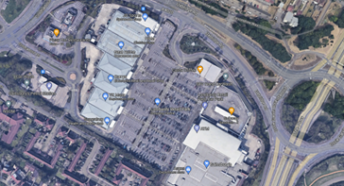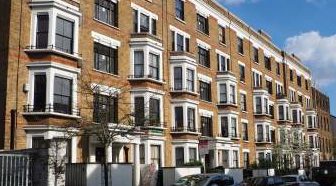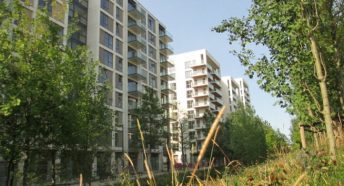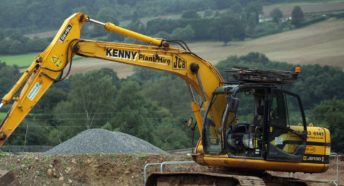Housing strategy disaster for Enfield residents
Council’s lose-lose housing strategy is a disaster for Enfield, say campaigners.
In a new report, Enfield’s Green Belt at Risk, released today 19 May 2021, [1] a coalition of local groups [2] say Enfield’s approach to new housing fails to deliver desperately needed family homes and unnecessarily promotes paving over our precious green fields instead of regenerating deprived areas.
The campaigners say the latest attempt to oblige release of Green Belt land [3] is unlikely to solve Enfield’s housing crisis [4] and ignores the vast amounts of previously-developed brownfield sites in need of regeneration. There are enough of these brownfield sites to provide the new homes that are needed, without building tower blocks, but the Council says it is unable to demonstrate a five-year supply of housing land and has only met 56% of its housing requirements [5].
Matt Burn of Better Homes for Enfield observed that “Our research also shows that affordable housing targets are routinely missed, especially targets for genuinely affordable social rent housing”.
“Enfield’s housing needs are being routinely side-lined in a drive to meet overall targets. We think that now more than ever, a new approach to housing is required that focuses on needs, not numbers”. [6]
Alice Roberts of CPRE London said: “The London Borough of Enfield recently released a local Strategic Housing Land Availability Assessment including 29 Green Belt sites which they say have potential for housing development”.
“But Green Belt housing is typically well out of range of anyone on low income. CPRE research [7] shows only a tenth of homes built in the Green Belt are ‘affordable’ and these are rarely for social rent. Additionally, people living in Green Belt developments have poor access to public transport and are tied to owning and using cars, as well as being stuck with the cost of commuting, creating further financial stress for families on low incomes”.
“The Council claims to be working for low-income residents but building on the Green Belt is likely to benefit only developers and wealthier people”.
Among the Green Belt sites targeted for destruction are: [8]
- Eight horticulture nurseries in Crews Hill, which campaigners say should be saved to provide local jobs and locally produced food
- Several large areas of productive farmland, vital for local food production at a time of food insecurity and climate emergency
- Edmonton Marsh, part of the Lee Valley Regional Park which is essential to provide a new park for residents in Meridian Water; an area already deprived of green space, vital for the well-being of local communities. [9]
Furthermore, Enfield Council is conducting another Green Belt Review for publication with the Local Plan [10]. Since the preceding comprehensive review is only 7 years old [11], this is either suspicious or precipitate, especially since the London Plan 2020 states that “The Green Belt should be protected from inappropriate development”. [12]
David Flint of EnCaf (Enfield Climate Action Forum) said: “Building on the Green Belt also leads to urban sprawl, undermines our ability to tackle pollution, climate change and the collapse of ecosystems, and eliminates local food production, wildlife habitats and of course areas for recreation for Enfield’s growing population.”
“We are urging local residents to contact their MP and local councillors, and to respond to the upcoming Local Plan consultation. They should say No to Green Belt destruction and Yes to urban regeneration and genuinely affordable homes and a sustainable future.”
Carol Fisk of Enfield RoadWatch added: “We need to secure London’s Green Belt for future generations. It would be tragic indeed to squander it just as millions of Londoners, in the wake of the pandemic, have discovered its life-saving value”.
A lot of the Green Belt is already owned or optioned by developers; the threats to Enfield’s Green Belt are very real.
Notes
[1] The report can be found on the Enfield Climate Action Forum website: the report recommendations are set out below.
[2] The coalition is Enfield RoadWatch, The Enfield Society, EnCaf (Enfield Climate Action Forum), CPRE London and Better Homes Enfield.
[3] The London Borough of Enfield [LBE] recently released a local Strategic Housing Land Availability Assessment including 29 sites which they say have potential for housing development.
[4] Space to build in Enfield.
[5] Enfield Council Public Reports Pack 02032021 Advanced report and Appendix A Housing delivery Action Plan file:///C:/Users/victo/OneDrive/Desktop/Climate%20emergency%202/EnCAF%20land%20use%20WG/Appendix%20A%20Enfield%20housing%20action%20derlivery%20plan.pdf
[6] Needs not numbers, report by Better Homes Enfield.
[7] Space to breathe: A State of the Green Belt report.
[8] See [3] above
[9] Let’s create ten major new parks for London, now!, Banbury Reservoir Park.
[10] FOI 26 April 2021 Mr David Flint “The Green Belt technical assessment is currently in preparation and is programmed to be published on the Council’s website alongside the draft Regulation 18 New Enfield Local Plan for consultation in summer 2021”.
[11] Enfield’s Local Plan: Detailed Green Belt Boundary Review.








